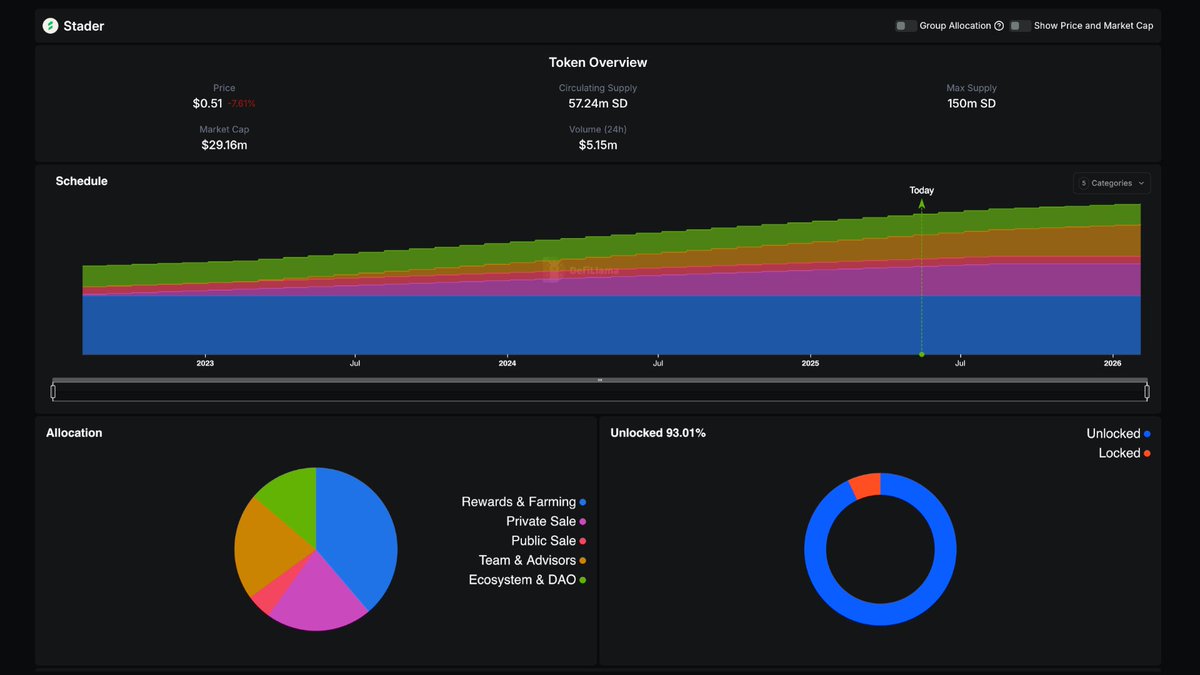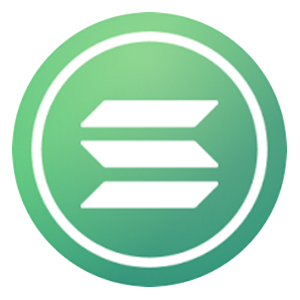
Stader price

Stader market info
Market cap = Circulating supply × Last price

Stader Feed
SD calculator


Stader price performance in USD
Popular Stader conversions
| 1 SD to USD | $0.46520 |
| 1 SD to PHP | ₱25.9500 |
| 1 SD to EUR | €0.41375 |
| 1 SD to IDR | Rp 7,646.29 |
| 1 SD to GBP | £0.34818 |
| 1 SD to CAD | $0.64898 |
| 1 SD to AED | AED 1.7087 |
| 1 SD to VND | ₫12,070.58 |
About Stader (SD)
- Official website
- White Paper
- Block explorer
Stader FAQ
Stader is a crypto project in the DeFi sector aiming to become a distribution layer for staking across major blockchains. It simplifies staking for retail users, enabling them to earn passive income without complex technical knowledge. Furthermore, Stader envisions empowering third-party developers to utilize its technology to build new staking applications and products.
Beyond earning passive income through staking, Stader’s technology enhances security, liquidity, governance, and decentralization, providing a comprehensive and robust staking experience for users.
Easily buy SD tokens on the OKX cryptocurrency platform. OKX’s spot trading terminal includes the SD/USDT trading pair.
You can also swap your existing cryptocurrencies, including XRP (XRP), Cardano (ADA), Solana (SOL), and Chainlink (LINK), for SD with zero fees and no price slippage by using OKX Convert.
Monitor crypto prices on an exchange
Disclaimer
OKX does not provide investment or asset recommendations. You should carefully consider whether trading or holding digital assets is suitable for you in light of your financial condition. Please consult your legal/tax/investment professional for questions about your specific circumstances. For further details, please refer to our Terms of Use and Risk Warning. By using the third-party website ("TPW"), you accept that any use of the TPW will be subject to and governed by the terms of the TPW. Unless expressly stated in writing, OKX and its affiliates (“OKX”) are not in any way associated with the owner or operator of the TPW. You agree that OKX is not responsible or liable for any loss, damage and any other consequences arising from your use of the TPW. Please be aware that using a TPW may result in a loss or diminution of your assets. Product may not be available in all jurisdictions.
SD calculator













































Socials